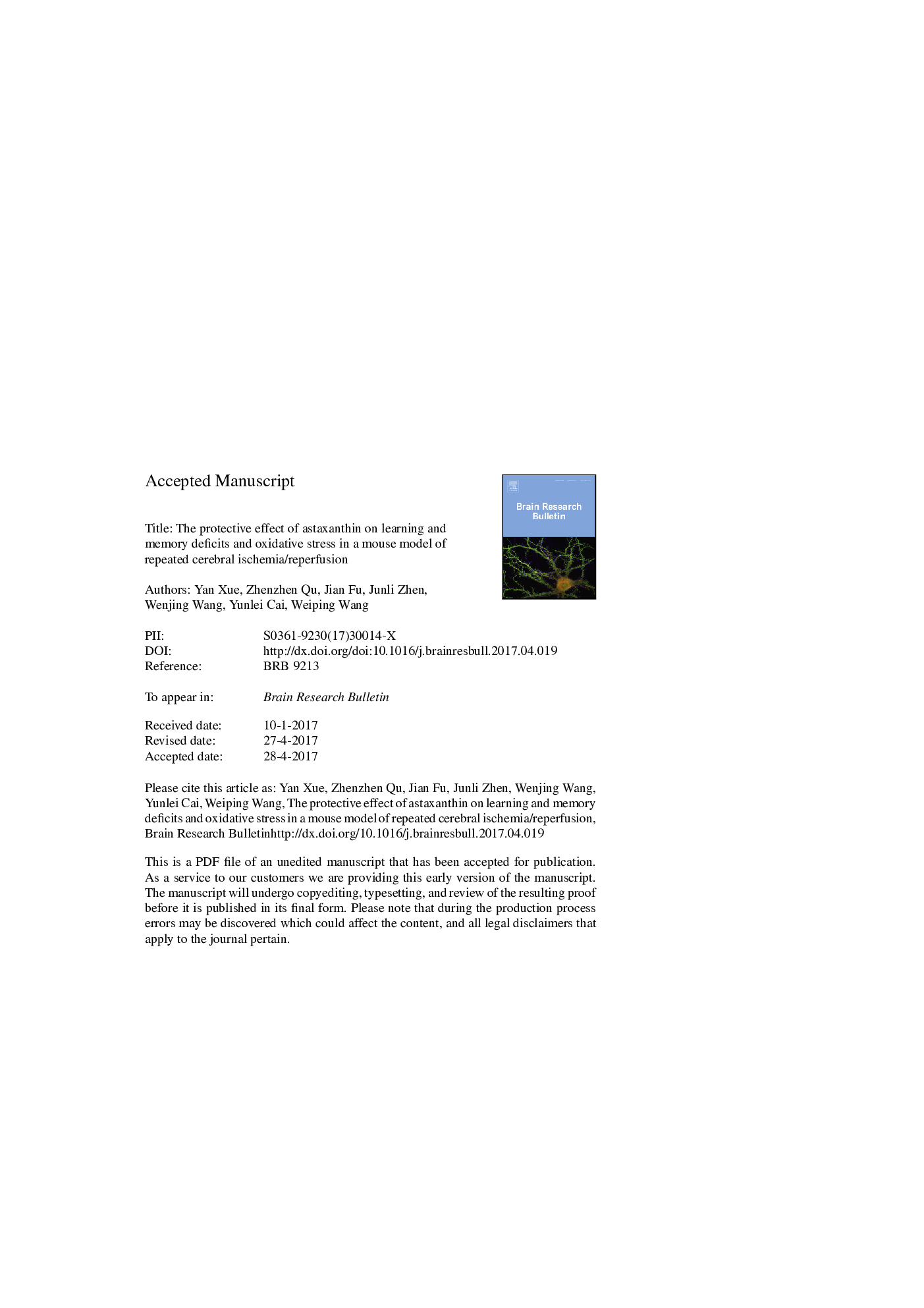| Article ID | Journal | Published Year | Pages | File Type |
|---|---|---|---|---|
| 5736280 | Brain Research Bulletin | 2017 | 38 Pages |
Abstract
Oxidative stress has been implicated in the pathogenesis of neurodegenerative disorders, such as vascular cognitive impairment (VCI). The present study was performed to investigate the potential neuroprotective effect of the antioxidant astaxanthin (ATX) in a mouse model of VCI. VCI was induced in male ICR mice by repeated occlusion of the bilateral common carotid artery, leading to repeated cerebral ischemia/reperfusion (IR) injury. After surgery, the mice received ATX or an equal volume of vehicle by daily intragastric administration for 28Â days. The results showed that ATX treatment ameliorated learning and memory deficits after repeated cerebral IR. ATX administration rescued the number of surviving pyramidal neurons in the CA1 and CA3 regions. The concentration of malondialdehyde was decreased, and the levels of reduced glutathione and superoxide dismutase in the hippocampus were increased. Electron microphotography revealed that damage to the ultrastructure of neurons was also reduced by ATX administration. In addition, the expression levels of Cytochrome C (Cyt C), cleaved Caspase-3 and Bax were lower and the expression of Bcl-2 was higher compared to control IR mice. Our findings demonstrate that ATX is able to suppresse learning and memory impairment caused by repeated cerebral IR and that this effect is associated with attenuation of oxidative stress.
Related Topics
Life Sciences
Neuroscience
Cellular and Molecular Neuroscience
Authors
Yan Xue, Zhenzhen Qu, Jian Fu, Junli Zhen, Wenjing Wang, Yunlei Cai, Weiping Wang,
